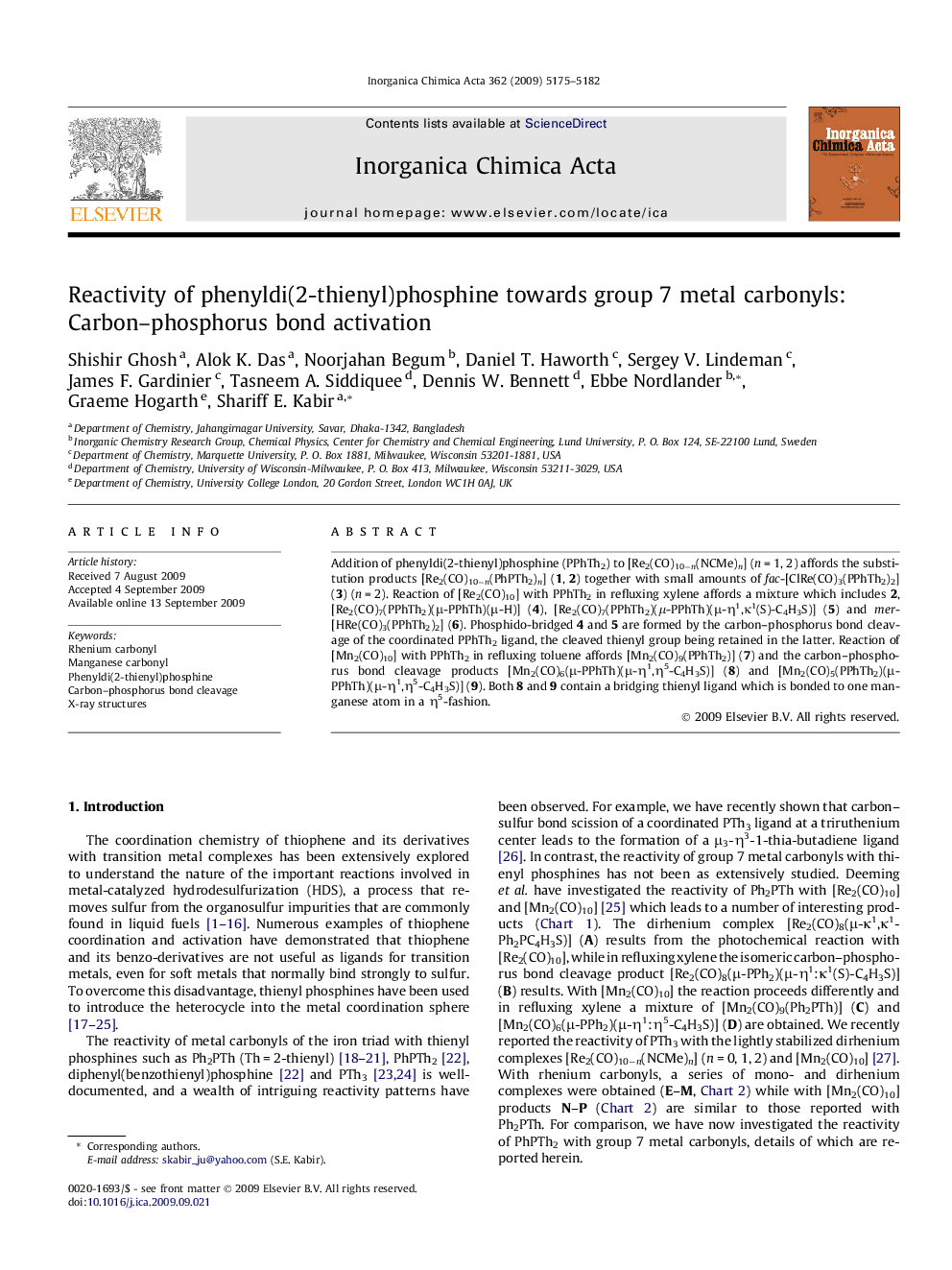| Article ID | Journal | Published Year | Pages | File Type |
|---|---|---|---|---|
| 1311342 | Inorganica Chimica Acta | 2009 | 8 Pages |
Addition of phenyldi(2-thienyl)phosphine (PPhTh2) to [Re2(CO)10−n(NCMe)n] (n = 1, 2) affords the substitution products [Re2(CO)10−n(PhPTh2)n] (1, 2) together with small amounts of fac-[ClRe(CO)3(PPhTh2)2] (3) (n = 2). Reaction of [Re2(CO)10] with PPhTh2 in refluxing xylene affords a mixture which includes 2, [Re2(CO)7(PPhTh2)(μ-PPhTh)(μ-H)] (4), [Re2(CO)7(PPhTh2)(μ-PPhTh)(μ-η1,κ1(S)-C4H3S)] (5) and mer-[HRe(CO)3(PPhTh2)2] (6). Phosphido-bridged 4 and 5 are formed by the carbon–phosphorus bond cleavage of the coordinated PPhTh2 ligand, the cleaved thienyl group being retained in the latter. Reaction of [Mn2(CO)10] with PPhTh2 in refluxing toluene affords [Mn2(CO)9(PPhTh2)] (7) and the carbon–phosphorus bond cleavage products [Mn2(CO)6(μ-PPhTh)(μ-η1,η5-C4H3S)] (8) and [Mn2(CO)5(PPhTh2)(μ-PPhTh)(μ-η1,η5-C4H3S)] (9). Both 8 and 9 contain a bridging thienyl ligand which is bonded to one manganese atom in a η5-fashion.
Graphical abstractReactions of the dirhenium and dimanganese complexes [Re2(CO)10−n(NCMe)n] (n = 0, 1, 2) and [Mn2(CO)10] with phenyldi(2-thienyl)phosphine have been investigated. A number of mono- and dinuclear complexes are obtained from these reactions by carbon–phosphorus bond cleavage of the phosphine ligand.Figure optionsDownload full-size imageDownload as PowerPoint slide
